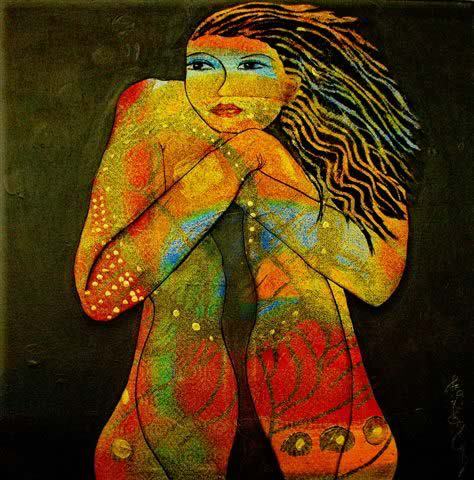
teaching in India

the Source of my teaching

One on one training
So much goes on in the Modern Yoga World (TM) now that it’s hard to keep up without it sounding like a constant rant. Maybe I should just write about what actor or rock star does yoga, post a photo of them drinking a latte with a mat under their arm, and comment on what brand yoga pants they wear. That would really be so much easier and would probably get me more readers. But I digress.
I’m sure by now many of you have heard about the Yoga Alliance stance on using terms such as “yoga therapy” or “therapeutic yoga” or anything that sounds like a teacher has anything to do with “healing” or “medicine” or even “alleviating.” You can can go on their site and see the restricted words. As someone who worked for litigation lawyers for 20 years I know it was a CYA (“cover your ass”) move.
The policy does not only apply to your YA profile but also to your personal website IF you are YA registered. Don’t register with the YA and you can say whatever you want about what you do or how you teach.
I am now an E-RYT 500 teacher with the YA and also an official “Continuing Education Provider.” Yes, yes, yes, I know — I ranted for years about the Yoga Alliance, I totally own that. You can read what I wrote in 2011 here when I was a mere E-RYT 200.
But the fact remains that there are those WHO WILL NOT STUDY OR TRAIN WITH A TEACHER UNLESS THEY ARE ANOINTED BY THE YOGA ALLIANCE. I resisted reinstating my YA registration for years and finally broke down. Of the teachers I know who also consider the YA useless and a waste of money, 100% say that the reason they pay up is because of the above reason. The teacher training I took at the old school Chicago studio where I originally certified in 2002 was never YA registered until people starting asking the owner whether his training was YA registered.
The fact is that I re-joined the YA purely for marketing reasons, not because I think it means anything. The fact is that after teaching for 15 years, training for 10 years in India, and being featured in a book, I am a yoga nobody where I live so if the YA seals give me “credibility” and “presence”, so be it.
I do not have the luxury of owning a studio that can attract students. And yes, if you are surviving and making money with a yoga studio that IS a luxury in today’s yoga business market, consider yourself lucky. I live in a town of 25,000 and there are three studios besides a park district that offers yoga. Fifteen years ago when I started teaching and basically knew nothing, I had 40 students in another park district’s class. Now I am lucky if I have five students who show up consistently. Those students don’t care about the YA but if I can get teachers who want more training by using the YA seal, I am going to use it to my advantage. It ain’t personal, it’s business, baby.
Cora Wen told me that back in 2001 Judith Lasater told her: “Every profession has an organisation and YA looks like they are winning in the registry. Get the certificate now. Or you will one day have to pay someone less qualified than you are to get a certificate.”
There ya go. Like I said….

Now the International Association of Yoga Therapists has rolled out their “certification” for yoga therapists. I’ve been an IAYT member for years and even wrote an article for their journal on teaching trauma sensitive yoga.
Don’t get me wrong. I think there should be some type of measure of a yoga teacher’s ability just as there is a measure for massage therapists, for example. And yes, I know MTs are licensed which I absolutely do not agree with for yoga teachers. But for these paid for labels to be the be-all and end-all and the only thing that makes a teacher worthy in the public eye makes me very itchy.
I looked into the IAYT certification process but I don’t have the proof that in all the intensives I took at the Krishnamacharya Yoga Mandiram that there was any “yoga therapy” involved. But there was because there always is something about yoga therapeutics beyond asana practice.
What got me thinking about all of this was the article “Are We Entering a Golden Age of Yoga Therapy??” by Eden Goldman. According to Goldman’s quote…
“Yoga Therapy is the philosophy, art, and science of adapting classical Yoga techniques to contemporary situations to support people with physical, mental, and emotional ailments. According to the definition of the International Association of Yoga Therapists (IAYT), “Yoga therapy is the process of empowering individuals to progress toward improved health and well-being through the application of the teachings and practices of Yoga.”
Practically speaking, Yoga Therapy is the reinvention of a personalized Yoga experience where the practice is modified to meet the individual’s ever-changing needs. Since ancient times, adaptability in one’s teaching, practice, and approach has rested at the heart of Yoga’s most fundamental influence: the relationship, insights, and trust created through the practice by one teacher working with one student.”
…I’ve been a “yoga therapist” for 10+ years. Do I still need to be anointed by the IAYT to be credible?
I’ve done 10 years of many intensives at the Krishnamacharya Yoga Mandiram, multiple yoga therapy trainings including two levels of Phoenix Rising, 300 hours of Svastha Yoga Therapy with Dr. Ganesh Mohan, a Therapeutic Yoga for Seniors training at Duke University, and trauma sensitive yoga. Besides teaching in India and Africa.
Can I call myself a “master teacher”? You tell me.
Do I still need the YA and IAYT seals on my website to prove my worth to the rest of the world?
It’s become crystal clear to me that the name of the game in the Modern Yoga World is MARKETING because no one gives a damn about all of the above. I don’t have the $6,000 that I need to upgrade my website to grab SEO and make it the latest and greatest Yoga Business site. It’s much cheaper for me to lose myself in South India and hang a shingle that says “YOGA TEACHER TRAINING.”
In my 15 years of teaching I’ve never put myself out there as a “yoga therapist” because I believe all yoga can be therapeutic if applied in a beneficial manner. Even Bikram Yoga was beneficial to the Vietnam War vet who spoke to us about his PTSD when I did the trauma sensitive yoga training.
I’ve always said that no one called Krishnamacharya a yoga therapist, he taught YOGA.
Krishnamacharya’s principle was “Teach what is inside you, not as it applies to you, to yourself, but as it applies to the other.“ He taught that Yoga should always be adapted to the unique needs of each individual.
Does one who jumps through the hoops and pays for the IAYT “certification” automatically know more or is more capable of supporting or empowering someone than I am? The buying of labels has been problematic for me for years. It’s the same old story: people will study with a Yoga Alliance or IAYT labeled teacher before they will with someone who has the years of experience.
In the end, I don’t need validation.
I know what I offer.
But then in this Modern Yoga day and age there is this passing itself off as “Yoga Medicine.” Yes, you CAN think yourself thin AND sexy!
It’s Tara Stiles’ Slim Calm Sexy Yoga all over again. Just use the word “meditate” and it makes it all credible and so deliciously New Age.
THAT POST IS EVERYTHING THAT IS WRONG WITH MODERN YOGA.
Women with eating disorders feel bad enough about themselves already, how much worse will they feel if they can’t “think themselves thin”? At least she didn’t mention bra fat.
How is this in any way empowering? I’m all about mindful eating and eating healthy foods, but the buzzwords used by this “master yoga teacher and specialist in sports and Chinese medicine” are what is typically found on a magazine cover at your grocery store check out line, the same bullshit that sounds like “LOSE YOUR BELLY FAT IN 5 EASY YOGA MOVES!”
No wonder us old school teachers throw in the towel
Funny. I did not see the Yoga Alliance or IAYT seals on her website. Anywhere.
Without them you can say whatever you want to say about yoga.

















You must be logged in to post a comment.